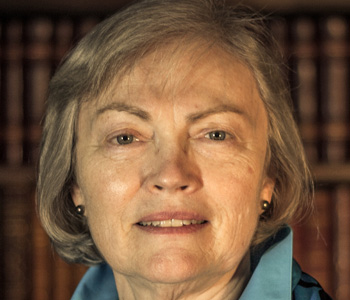Mary Beth Norton
Separated by their Sex: Women in Public and Private in the Colonial Atlantic World
Cornell University Press
272 pages, 6 x 9 inches
ISBN 978 0801449499
Separated by their Sex examines the origins of a crucial concept: the notion that the world is divided into realms we call public and private.
A gendered public-private divide—in which the private realm of the household is assigned to women and the rest of the world to men—appears fundamental today, even though in the twenty-first century such definitions are changing. There are still far fewer women than men in public office, and far fewer “house husbands” than housewives. Key problems of integrating work and family life are even today assumed to be primarily women’s concern.
Yet despite its seemingly timeless quality, the gendered public-private divide turns out to have a history: it originated in early eighteenth-century England.
Its promoters were the cultural arbiters of the day, John Dunton, Richard Steele, and Joseph Addison. Dunton outlined the parameters of the private, whereas Addison’s and Steele’s writings carefully excluded women from the public, attempting to ensure that men controlled politics at all levels, including discourse.
My book uses a series of case studies from both sides of the Atlantic over more than a century to expose the developing history of the gendered public-private divide.
Dunton is the focal point of one chapter, while Addison and Steele play major roles in two others. Also making prolonged appearances are, among others, female petitioners on political topics to Parliament during the English Civil War of the 1640s and the men who responded to them; the wives of two colonial governors; the female author of numerous political broadsides in late seventeenth-century London; the first American woman to keep a travel journal (in 1704); and the young Benjamin Franklin, who in the 1720s wrote several important essays under the pseudonym “Silence Dogood,” claiming to be a rural Massachusetts widow.

�John Dunton was the first man to term the female realm of the household <em id="">private</em>.
I first realized that the gendered terminology of public and private had a history while I was working on a book about social and political life in early New England and the Chesapeake (published in 1996 as Founding Mothers & Fathers).
Much to my astonishment, I discovered that in those colonies no one used such language; the concepts did not then exist in the form now familiar to us.
Until I studied the seventeenth century, I never questioned the divide: it is so commonly used by historians that it has structured many books about the nineteenth, twentieth, and even earlier centuries.
Thus I set out to uncover the origins of our modern notions, so often employed by historians as unproblematic descriptors of the past in a manner I now understand to be erroneous and misleading. Separated by their Sex reports what I learned from several years of research in America and England.
John Dunton was the first man to term the female realm of the household private. Little known today, Dunton was an influential London printer and author whose heyday came in the 1690s when he edited and published the Athenian Mercury, a popular question-and-answer broadsheet that served as the Ann Landers (or Ask Amy) column of its time. Earlier, cultural prescriptions had placed men in direct charge of household affairs. But in the Mercury, and later in a 1702 pamphlet, Dunton promoted the idea that women bore unique responsibility for all matters pertinent to marriage and the family.
The other side of the story involves politics, and it will probably surprise many readers, as it did me, to learn that in the seventeenth century status rather than gender determined the identity of acknowledged political actors.
High-ranking women as well as high-ranking men played important roles in the political life of England and America. For example, in early Maryland, the gentlewoman Margaret Brent served as the chief financial officer of the colony for about eighteen months during a critical period of its existence.
In the book I focus initially on the political activities of Lady Frances Berkeley, the wife and later widow of Virginia’s governor during and after Bacon’s Rebellion in the 1670s. Even though her actions aroused considerable criticism, especially from her husband’s successor (whom she was trying to obstruct), no one argued that her gender identity rendered her acts illegitimate.
By contrast, in 1730s New York, an aristocratic wife of a later governor, Grace Cosby, was harshly censured for very similar actions—and several anonymous authors quickly penned newspaper essays explaining why no woman should ever engage in political activity.
Even though eighteenth-century men succeeded in convincing American women that their lives should be “private” rather than “public,” as I show through references to women’s own letters and diaries, women did not allow men to define private for them.
For men, private meant husband and children; for women, it meant that but also their relationships with female friends (which men told them to forgo).
Around tea tables, in female-dominated rituals denigrated by men, women forged their own definition of private life. They accordingly made their own critical contribution to the creation of the modern cultural norm.
I may be perverse, but my favorite parts of the book are those that detail men’s most misogynistic or outrageous comments about women’s interest in public affairs.
I think, for example, of the genre of English pamphlets on the theme of a parliament of ladies. (One such pamphlet supplies the book with its cover image.) Henry Neville, a political satirist of the 1640s, fantasized about an English House of Lords composed of aristocratic women in two brilliant, subtly pornographic pamphlets filled with clever double entendres. While reading them, I was repeatedly forced to stifle my laughter to avoid disturbing other patrons of the quiet rare-book reading room of the British Library (see pp. 53-60).
Or there was Joseph Addison, warning women in 1711 that too much engagement with “party rage” would inevitably destroy their complexions and lead them to neglect their family responsibilities.
And finally, the argument I see as the icing on the cake: the anonymous author who in the 1730s insisted that Queen Elizabeth was a hermaphrodite, because it was obvious that no true woman could have been a ruler as successful as she!
I also think readers will enjoy the accounts of women’s tea-table socializing. The contrast between male writers’ critiques of women’s empty-headed gossiping and women’s own comments about the pleasures of exchanging ideas and, yes, gossip, with their friends, is striking and revealing.
Plus, I had to learn the history of tea, one of my favorite beverages—I gave up coffee long ago. Who knew that Catherine of Braganza, the Portuguese wife of Charles II, first brought tea to England on her marriage in 1662? I didn’t—until I wrote this book.

�I now cringe whenever I read something that purports to describe the “private” realm in medieval Europe, for example. We shouldn’t employ such terms when writing about historical eras before the gendered notion of the private existed.
I hope this book will help scholars and other readers to stop automatically applying the modern concept of the public-private divide to societies that existed before approximately 1720.
I now cringe whenever I read something that purports to describe the “private” realm in medieval Europe, for example. We shouldn’t employ such terms when writing about historical eras before the gendered notion of the private existed. If we do use them, we should acknowledge, at the very least, that they are inventions of the eighteenth century, and that we are applying them anachronistically.
The knowledge of the invention of the public-private divide is crucial today—for modern Americans to understand that notions of “women’s proper sphere” were historically constructed.
Ideas created nearly three hundred years ago can be changed when the circumstances that fostered them no longer apply. And then, perhaps, the next woman to run for president will not encounter the same assumptions and prejudices that confronted Hillary Rodham Clinton in 2008.




We don't put paywalls. We don't distract you with ads. We don't sell your data.
Please help to keep this running!